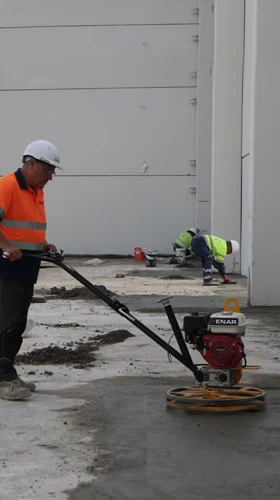How to solve the most common problems when using a trowel?
The machine leaves marks or swirls: This is usually because the concrete is too soft or, conversely, too hard when trowelling. It can also be caused by dirty or worn blades. Clean or replace the blades and adjust the timing of entry into the screed.
The finish is not uniform: Irregular working speed or varying pressure. Maintain a constant pace and overlap the passes well. Check that all blades are at the same angle.
The surface ‘burns’ (darkens and seals very quickly): Too much rotation speed (RPM) or a blade angle that is too aggressive for that stage of setting. Lower the revolutions or the angle of the blades.
The machine vibrates a lot or is uncontrollable: This is almost certainly due to an imbalance. It could be caused by lumps of concrete on a blade, a broken blade or a set of blades with different levels of wear. Stop the machine immediately and check that everything is clean and symmetrical.
- What is concrete surface vibration and why is it important?
- How does a vibrating screed work?
- How does a power trowel work and when should it be used?
- What types of finishes are available for concrete flooring?
- What is the difference between polished, trowelled and semi-polished concrete?
- Petrol or electric vibrating screed?
- How do I choose the right size vibrating screed for my project?
- What maintenance does a vibrating screed or trowel require?


